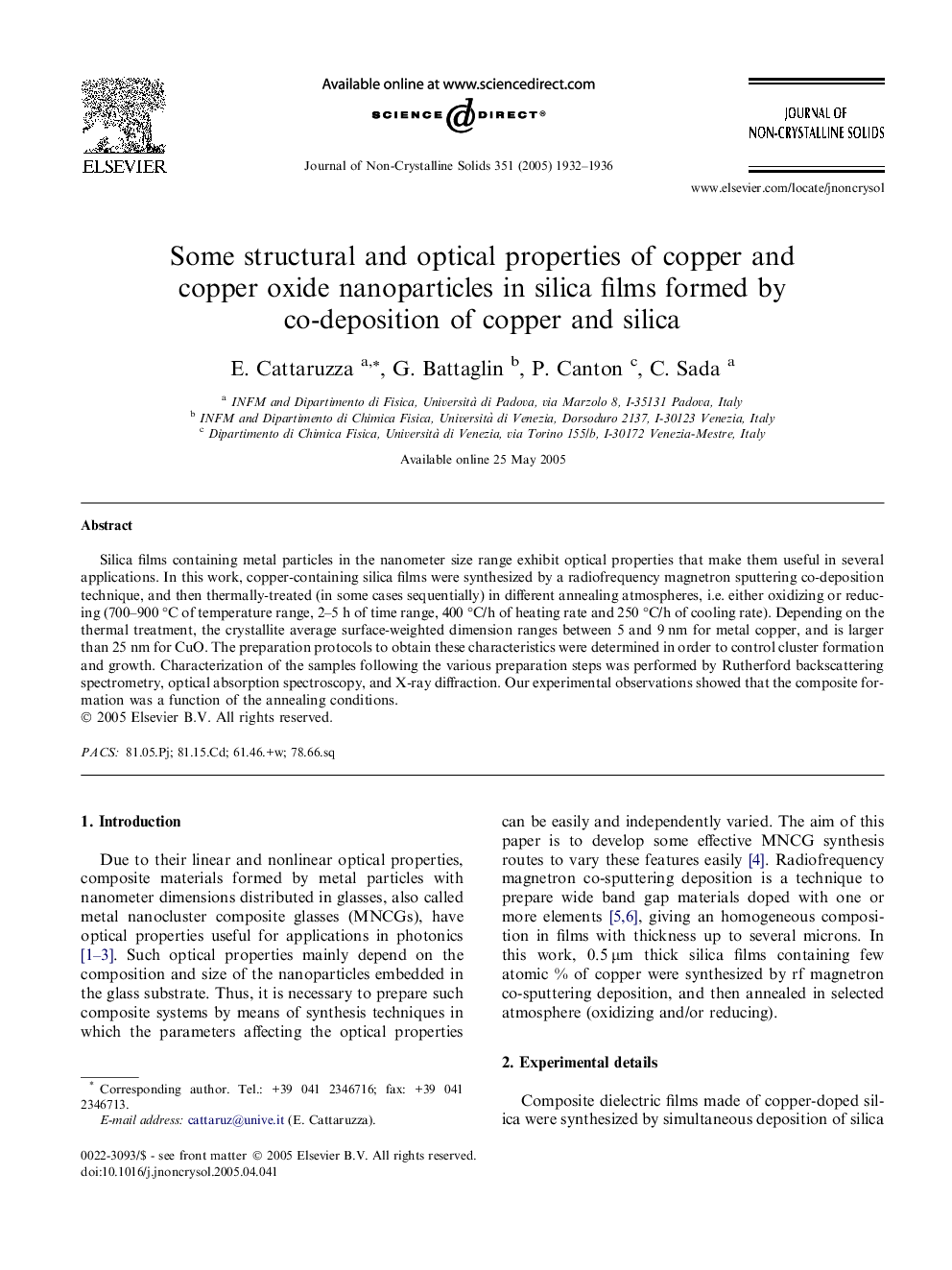| Article ID | Journal | Published Year | Pages | File Type |
|---|---|---|---|---|
| 9778043 | Journal of Non-Crystalline Solids | 2005 | 5 Pages |
Abstract
Silica films containing metal particles in the nanometer size range exhibit optical properties that make them useful in several applications. In this work, copper-containing silica films were synthesized by a radiofrequency magnetron sputtering co-deposition technique, and then thermally-treated (in some cases sequentially) in different annealing atmospheres, i.e. either oxidizing or reducing (700-900 °C of temperature range, 2-5 h of time range, 400 °C/h of heating rate and 250 °C/h of cooling rate). Depending on the thermal treatment, the crystallite average surface-weighted dimension ranges between 5 and 9 nm for metal copper, and is larger than 25 nm for CuO. The preparation protocols to obtain these characteristics were determined in order to control cluster formation and growth. Characterization of the samples following the various preparation steps was performed by Rutherford backscattering spectrometry, optical absorption spectroscopy, and X-ray diffraction. Our experimental observations showed that the composite formation was a function of the annealing conditions.
Related Topics
Physical Sciences and Engineering
Materials Science
Ceramics and Composites
Authors
E. Cattaruzza, G. Battaglin, P. Canton, C. Sada,
